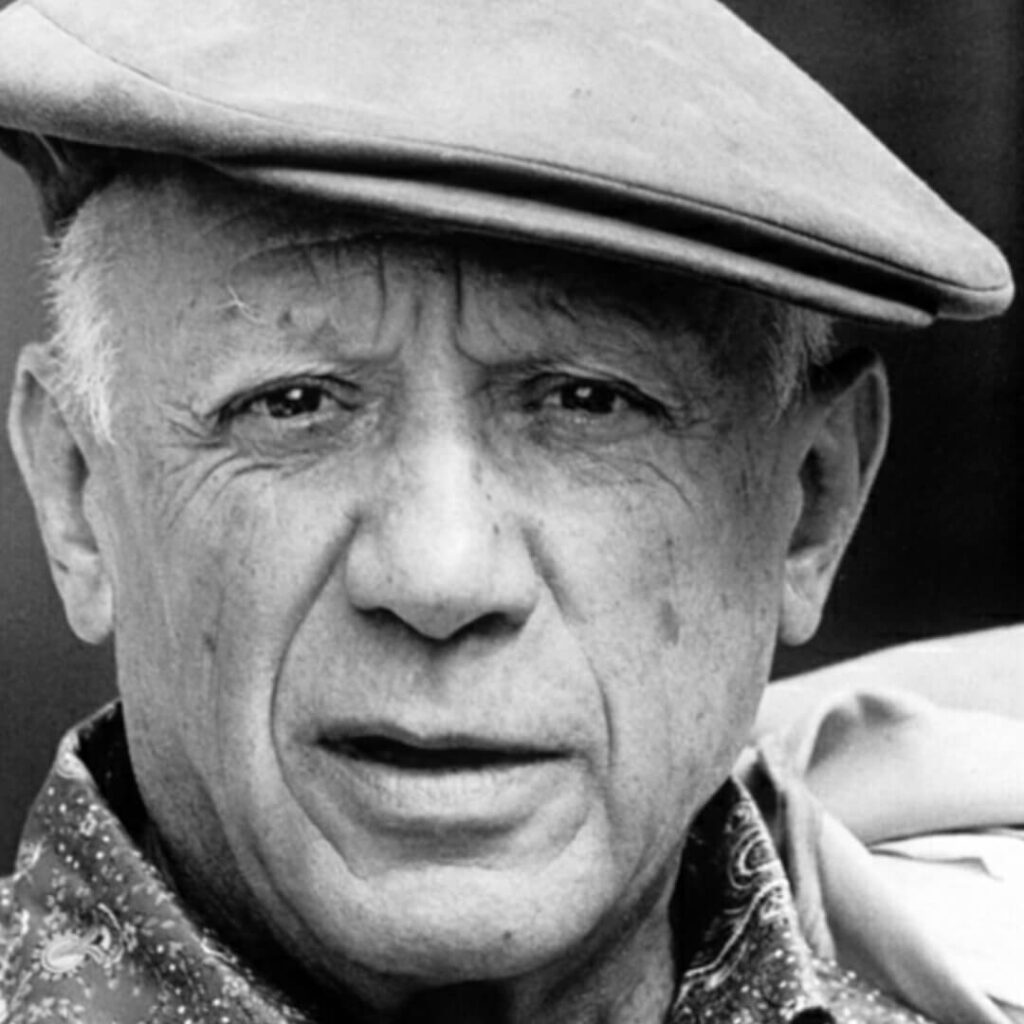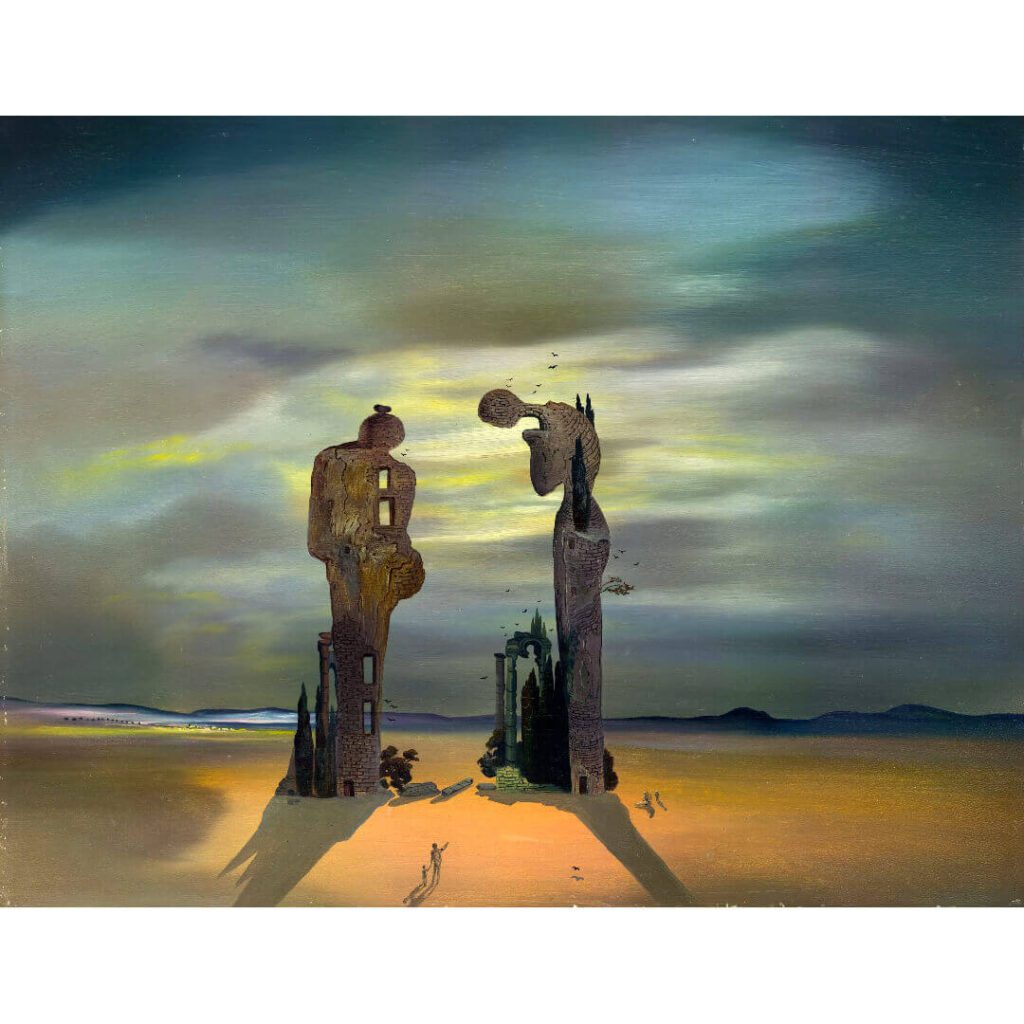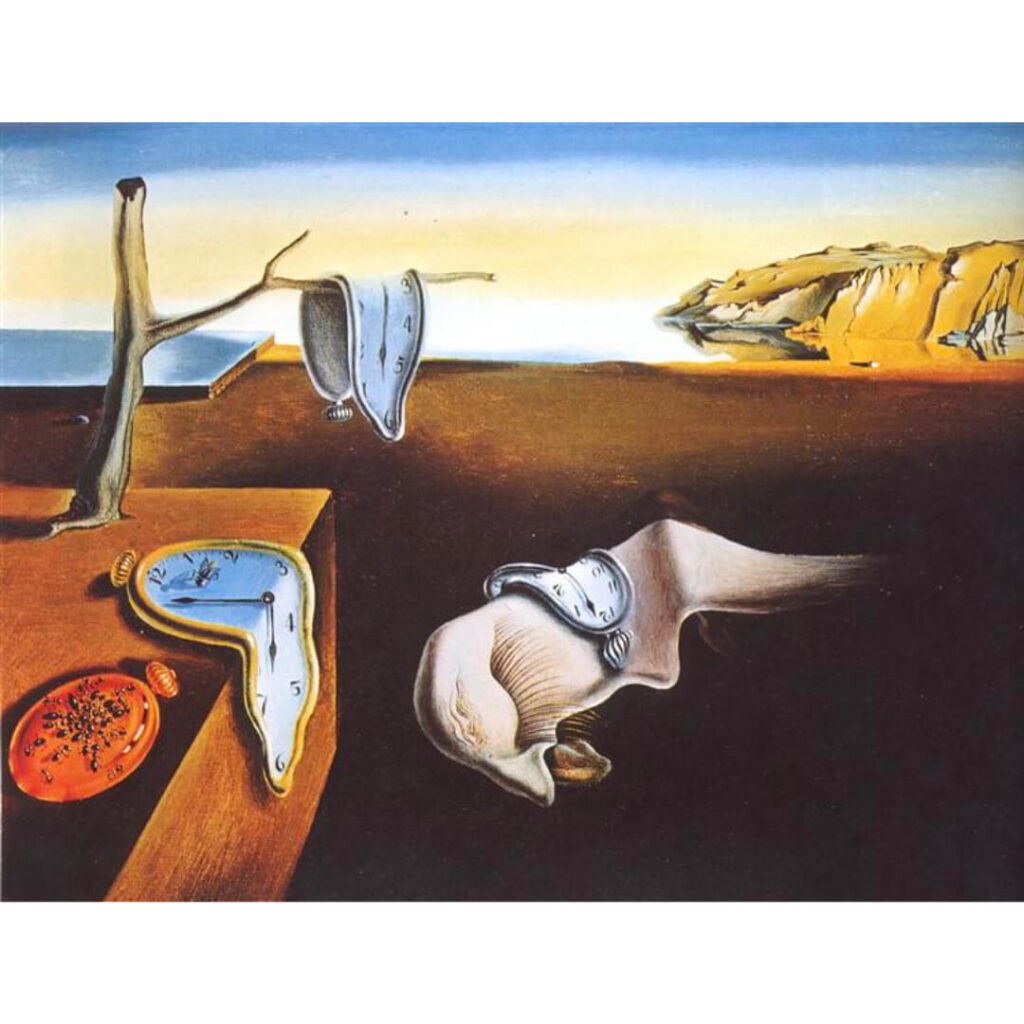When you think of two significant 20th-century names, two names will continue to come up: Salvador Dali and Pablo Picasso.
Salvador Dalí and Pablo Picasso are two of the most iconic and influential artists of the 20th century. These Spanish painters revolutionized the art world with their unique styles and groundbreaking approaches to art. Although they were contemporaries and shared a common heritage, their styles differed vastly, and their artistic visions diverged significantly. Read on as we will explore the similarities and differences between Salvador Dalí and Pablo Picasso.
Table of Contents
- Salvador Dali And Pablo Picasso’s Artistic Similarities Explored
- Salvador Dali And Pablo Picasso’s Artistic Differences Explained
- Frequently Asked Questions
- Related Questions
Salvador Dali And Pablo Picasso’s Artistic Similarities Explored
Salvador Dali and Pablo Picasso, two of the most renowned and celebrated artists of the 20th century, shared several similarities in their art and lives. There are many things the two influential artists have in common.
Here are five essential similarities that Salvador Dali and Pablo Picasso shared:
Both Salvador Dali and Pablo Picasso Shared Spanish Heritage

Salvador Dali and Pablo Picasso were born and raised in Spain, and their Spanish heritage significantly impacted their artistic styles. Picasso is considered one of the founders of the Cubist movement, which was heavily influenced by African and Iberian art.

Dali’s work often features surrealist images that reflect his Spanish upbringing and cultural background.
Both Had A Love Of Classical Art
Both Dali and Picasso sincerely appreciated classical art, and they often incorporated elements of it into their work. Picasso, for example, was heavily influenced by the ancient Greek and Roman sculptures he saw during his travels to Italy, and his early work often featured classical themes and motifs.
Similarly, Dali’s work often features religious imagery and classical symbols, which he reimagined in his unique style.
Both Dali And Picasso Had Innovative Techniques
Both artists were known for their innovative techniques and unconventional approaches to art. Picasso is credited with inventing collages and often incorporating found objects into his work. On the other hand, Dali experimented with various techniques, including photomontage, holography, and three-dimensional art.
Both Artists Used Their Art To Comment On Politics
Salvador Dali and Pablo Picasso were politically engaged and used their work to comment on their time’s social and political issues. Picasso’s famous painting “Guernica” is a powerful indictment of the horrors of war and the suffering it inflicts on innocent civilians.

Dali’s work often reflects his concerns about the rise of fascism in Europe and its impact on Spanish society.

Dali And Picasso Both Gained International Recognition
Both Dali and Picasso achieved international recognition and acclaim for their work, and their impact on the art world cannot be overstated. Picasso is widely regarded as one of the most influential artists of the 20th century, and his work has inspired countless other artists in the decades since his death.
Similarly, Dali’s surrealistic imagery and innovative techniques continue to captivate audiences worldwide, and his legacy lives on as one of the most influential figures in modern art.
These similarities are significant because they help us understand the context in which Dali and Picasso created their work. By examining their shared heritage, artistic influences, and innovative techniques, we can gain a deeper appreciation for the contributions they made to the art world and the impact they continue to have on artists today.
Additionally, their engagement with political and social issues reminds us that art can be a powerful tool for social commentary and critique and that artists have an essential role in shaping public discourse and awareness.
Salvador Dali And Pablo Picasso’s Artistic Differences Explained
While sharing some similarities in their art and lives, Salvador Dali and Pablo Picasso had vastly different artistic styles and approaches to their work.
Here are five essential differences between their artwork:
Pablo Picasso And Salvador Dali Had Different Artistic Styles
Perhaps the most apparent difference between Dali and Picasso is their artistic style. Picasso is known for his cubist paintings, breaking objects into geometric shapes and often distorting perspective.
On the other hand, Dali is known for his surrealist paintings, which often feature bizarre and dreamlike imagery.
They Both Used Color Differently

Another critical difference between Dali and Picasso is their use of color. Picasso’s paintings often feature vivid colors, whereas Dali had earthy, almost muted tones.

This difference in color palette reflects their divergent artistic visions and the moods they sought to convey in their work.
Incorporated Different Symbols In Their Artwork
While both Dali and Picasso incorporated symbols into their work, they did so in very different ways. Picasso often used traditional symbols and motifs from classical art. At the same time, Dali’s work is characterized by bizarre and often unsettling imagery, such as melting clocks and distorted faces.
Dali And Picasso Had Different Subject Matter In Their Work
The subject matter of Dali and Picasso’s work also differs significantly. While Picasso often painted portraits and still lifes, Dali’s work often defies easy categorization and features a range of bizarre and fantastical images.
This reflects their different approaches to art and their desire to explore different themes and ideas through their work.
They Each Had A Different Approach To Collaboration
Dali and Picasso had very different approaches to collaboration. While Picasso often collaborated with other artists, such as Georges Braque and Juan Gris, Dali preferred to work alone and was known for his fierce individualism.
This reflects their different personalities, artistic visions, and importance in the creative process.
These differences are significant because they help us understand the unique contributions that Dali and Picasso made to the art world. By examining their divergent styles, use of color, subject matter, symbols, and approaches to collaboration, we can gain a deeper appreciation for the breadth and depth of their work.
These differences remind us that there are many different ways to approach art and that each artist has a unique perspective and vision to share with the world.
Picasso and Dali’s similarities and differences reflect their unique artistic visions and the context in which they created their work. They remind us of the importance of individuality and diversity in the art world. By examining the similarities and differences between Dali and Picasso, we can gain a deeper appreciation for their legacies and the impact they continue to have on artists today.
Anita Louise Art is dedicated to art education, great artists, and inspiring others to find and create their art. We love art that uplifts and inspires. #ArtToMakeYouSmile! #ArtToMakeYouHappy!
If you are interested in seeing any of my art, you can find out more by clicking here. If you are interested in what inspires me and my paintings, you can discover more by clicking here.
We have a free newsletter and would love you to be part of our community; you can subscribe to the newsletter by clicking here. If you have any questions, I would be happy to talk to you. You can reach me, Anita, by clicking here.
Subscribe to our Anita Louise Art YouTube Channel filled with great videos and information by clicking here.
Join us for our podcast “5 Minutes With Art.” Spend just 5 minutes a week with us to discover and learn about great art and artists. You can find out more about our podcast by clicking here.
Frequently Asked Questions
How did Salvador Dalí and Pablo Picasso contribute to the art world?
Salvador Dalí and Pablo Picasso made significant contributions to the art world by introducing innovative styles and techniques. Dalí is renowned for his surrealist works, while Picasso played a pivotal role in the development of Cubism.
What were the major art movements associated with Salvador Dalí and Pablo Picasso?
Dalí was closely associated with Surrealism, a movement that sought to express the irrational and subconscious in art. On the other hand, Picasso played a key role in the Cubist movement, which aimed to depict subjects from multiple perspectives simultaneously.
How did the personal lives of Dalí and Picasso influence their art?
Both artists drew inspiration from their personal experiences. Dalí often explored his dreams and subconscious mind in his works, while Picasso’s art was influenced by his relationships, politics, and various stages of his life.
In what ways did Salvador Dalí and Pablo Picasso use symbolism in their art?
Dalí and Picasso both employed symbolism in their works, albeit in different ways. Dalí’s paintings often featured dreamlike and symbolic elements, while Picasso used symbols to deconstruct and reinterpret traditional artistic forms.
What role did traditional techniques play in the works of Dalí and Picasso?
While both artists were known for pushing artistic boundaries, Picasso was more inclined towards experimenting with traditional techniques, especially during his Blue and Rose periods. Dalí, on the other hand, often incorporated classical techniques in a surreal context.
How did Salvador Dalí and Pablo Picasso approach the depiction of the human form in their art?
Dalí and Picasso had distinct approaches to portraying the human form. Dalí’s figures were often distorted and dreamlike, reflecting his fascination with the subconscious. Picasso, in contrast, deconstructed and reassembled the human figure in a Cubist fashion.
Were there any common themes in the works of Salvador Dalí and Pablo Picasso?
Although their styles differed, both artists explored themes related to identity, the human condition, and societal issues in their works. However, the way they approached these themes was unique to their respective artistic visions.
How did Salvador Dalí and Pablo Picasso’s relationships with other artists and movements influence their work?
Dalí had connections with Surrealist contemporaries like André Breton, while Picasso collaborated with other influential artists like Georges Braque during the development of Cubism. These associations had a notable impact on their artistic evolution.
How did the political and social contexts of their times influence the art of Dalí and Picasso?
The political and social upheavals of the 20th century, including the Spanish Civil War and World Wars, influenced the subject matter of both artists. Picasso’s “Guernica” is a notable example of art responding to political turmoil, while Dalí’s work often reflected the anxieties of his era.
How do Salvador Dalí and Pablo Picasso’s legacies continue to influence contemporary art?
The legacies of Dalí and Picasso persist in contemporary art through their innovative approaches to form, content, and artistic expression. Surrealist and Cubist influences can be seen in the works of many contemporary artists who draw inspiration from these iconic figures.
Related Questions
Why Do People Say, ”Life Is Like Drawing Without An Eraser?
Often, artists, myself included, will use an eraser to remove any marks or measurements we may have made on a paper to measure out and organize their drawings or artwork on their canvas or paper. For most artists, having a good eraser is essential.
By clicking here, you can learn more by reading Why Do People Say, ”Life Is Like Drawing Without An Eraser?.
Is Communism Good For The Arts?
Communism is not suitable for art, and for many artists under Communism the art should have a purpose and way to help further the communist ideals and ideology. In a Communist society, many artists are labeled as dissidents; others are forced to use their talents to create propaganda art.
By clicking here, you can learn more by reading Is Communism Good For The Arts?.
12 Years Leonardo Painted Mona Lisa’s Lips, Facts Or Fiction?
No evidence shows that Leonardo da Vinci spent 12 years painting the Mona Lisa smile. Most scholars believe that he painted the painting in 4 years but then had the painting much longer in his possession. He could have worked on it a bit or adjusted it when he had it in his possession, but there is no evidence to show that.
By clicking here, you can learn more by reading 12 Years Leonardo Painted Mona Lisa’s Lips, Facts Or Fiction?.


